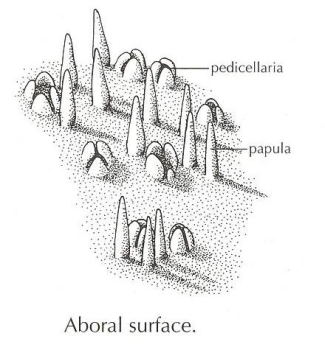Family Description
Large disc (usually); short, broad arms. The aboral skeletal plates are sometimes meshlike, in regular radial rows, but usually covered with thick skin, which can be smooth, granulated or spiny. The marginal plates can vary from prominent to poorly developed, usually oblique or overlapping, sometimes with a small group of spinules on the outer edge or with a single spine; the edge of the disc is thin. The oral intermediates are parallel to the adambulacrals. The adambulacral plates have two series of spines sheathed in thick skin. The papulae can be single or grouped in dorsal radial areas. Bivalved or granuliform pedicellariae are sometimes present.
